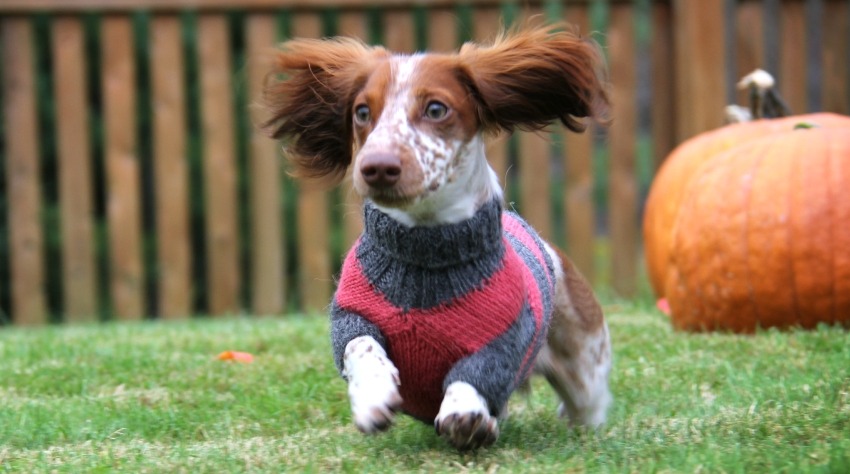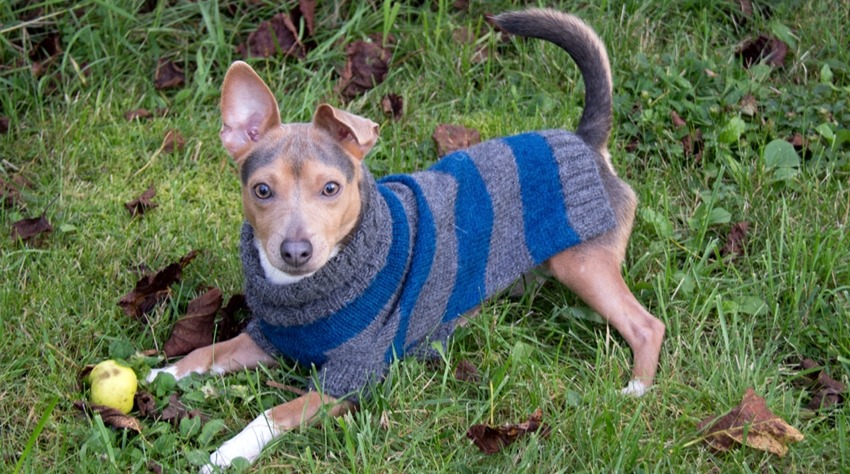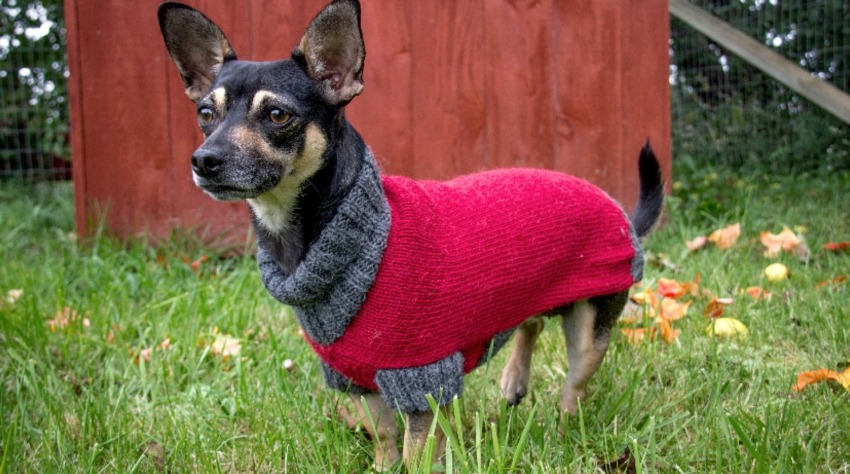Does your dog need a sweater?
The idea of dressing a dog seems to some a ridiculous notion. Dog’s, unlike us, are naturally clothed in a fur coat. While this is true, many dogs require an added layer to remain comfortable during the winter months. Whether or not your dog would benefit from a sweater in the winter depends on his/her age, size, and hair coat.
The smaller the pup, the more likely they would benefit from some winter apparel. Their surface area to weight ratio allows much of the heat they produce to be quickly dissipated. For this same reason, veterinarians are concerned with hypothermia when small dogs must undergo general anesthesia.
As dogs age, they may become thin or suffer from metabolic conditions that impair their ability to properly maintain an adequate body temperature. Dog with naturally thin or short haircoats lack the insulation needed to stay warm. Likewise, dogs that have been shaved or clipped will require extra assistance in staying warm in the winter.
While your toy breed may enjoy wearing a sweater much of the time, a proper fit is necessary for comfort and safety. Additionally, the sweater or jacket should be removed anytime the dog appears over-heated (i.e. begins panting). Removing the clothing every 1-2 days to check for any rubs from ill-fitting clothing is also recommended.
Fitting your dog for a sweater:
The sweater should be close to the body but not snug or restricting. The neck needs to be small enough that the dog does not get a front leg through it when curled up sleeping and big enough that three fingers can be easily slid between the sweater and the dog’s neck. The leg holes should also allow for freedom of movement so that irritation on the upper legs does not occur. The sweater should not drag on the ground. For male dogs, it is important that the underside is forward enough that trips outside to potty do not result in a soaked sweater. Ideally, the clothing does not have any small additions such as buttons or strings that a small dog might be tempted to chew and ingest. The best way to ensure a correct fit is to take some measurements of your dog. The measurements needed include: the length around the neck, the length around the widest part of the chest, and the length from the base of the neck to the base of the tail. It is also helpful to know your dog’s weight. If your dog’s measurements fall between sizes, it is probably best to go with the bigger size.



